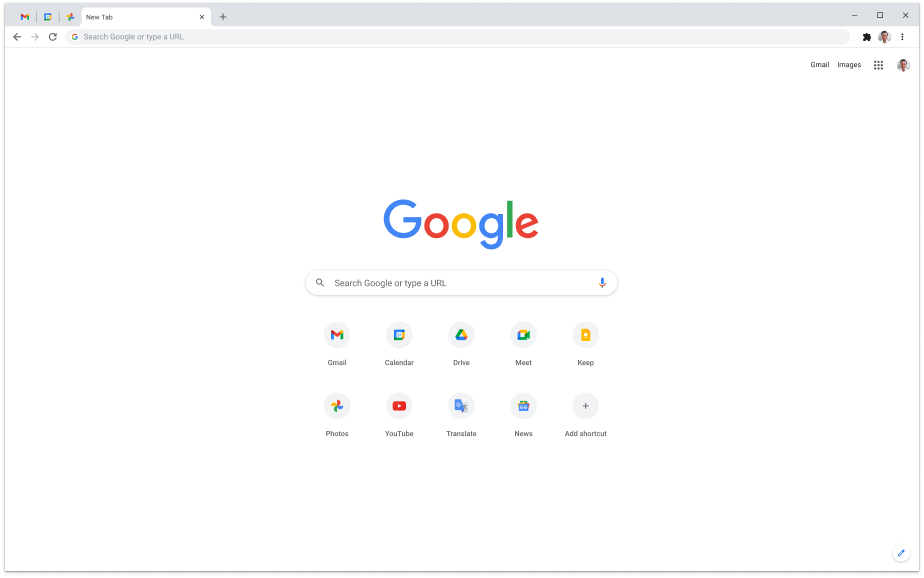Google Chrome remains the king of the web browsers, with almost exactly 70% market share as of June 2020.Microsoft's newest Edge browser, which uses the Chromium open-source engine, is in a. Google Chrome is a fast, easy to use, and secure browser. Designed for Android, Chrome brings you personalized news articles, quick links to your favorite sites, downloads, and Google Search and Google Translate built-in. Fast and save data. Turn on Chrome's Data Saver to browse and navigate the web while using less data. Save up to 60% of data as Chrome compresses text, images, videos.
- Google Com Chromecast Setup/pc
- How To Download Google Chrome
- Google.com Chrome Download
- Google.com/chromeos/recovery
Google has historically released new versions of Chrome every six weeks with smaller patches rolled out in between. In a big change, Google Chrome is moving to a four-week update cycle this year.

From the beginning, Google has taken an aggressive stance on updating its browser in the background. Chrome is architected that way to ensure security, with new versions downloading silently and users getting frequently prompted to install by restarting.
Major versions (i.e. 88 -> 89) with new features are released every six weeks, while smaller security-focused updates come biweekly. Later this year, Google plans to release a 'milestone' every four weeks so that new functionality on Mac, Windows, Linux, Android, iOS, and Chrome OS can come on a faster monthly basis.
As we have improved our testing and release processes for Chrome, and deployed biweekly security updates to improve our patch gap, it became clear that we could shorten our release cycle and deliver new features more quickly.
This four-week cycle is expected to let Google 'more consistently move the majority of users to the latest stable release within 2 weeks.'

From the beginning, Google has taken an aggressive stance on updating its browser in the background. Chrome is architected that way to ensure security, with new versions downloading silently and users getting frequently prompted to install by restarting.
Major versions (i.e. 88 -> 89) with new features are released every six weeks, while smaller security-focused updates come biweekly. Later this year, Google plans to release a 'milestone' every four weeks so that new functionality on Mac, Windows, Linux, Android, iOS, and Chrome OS can come on a faster monthly basis.
As we have improved our testing and release processes for Chrome, and deployed biweekly security updates to improve our patch gap, it became clear that we could shorten our release cycle and deliver new features more quickly.
This four-week cycle is expected to let Google 'more consistently move the majority of users to the latest stable release within 2 weeks.'
Get google browser. As part of this change, 'enterprise administrators and Chromium embedders who need additional time to manage updates' will get an 'Extended Stable' milestone that's on a longer eight-week cycle. Regular, non-managed Chrome users won't be given access to this channel.
Security updates on Extended Stable will be released every two weeks to fix important issues, but those updates won't contain new features or all security fixes that the 4-week option will receive.
Chrome OS, which updates a week after desktop and mobile, is also getting support for multiple stable releases. More details are set to arrive in the coming months for Chromebook administrators with managed devices.
Google will implement this new release cycle with Chrome 94 in the third quarter of 2021. The company is currently targeting September 21st for that update, with the last six-week version being Chrome 93 on August 31st. A preliminary schedule is available with new documentation, and the team is taking feedback from Chromium contributors at branches@chromium.org.
More about Google Chrome:
FTC: We use income earning auto affiliate links.More.
Chrome is a very popular web browser designed to be fast and lightweight. It was developed by Google in order to make surfing the web easier even as technology changes. Chrome has an incredibly minimalist interface with very few buttons or menus. This is intended to maximize the amount of screen space available for displaying websites. The browser even has a full screen mode that removes the address bar and borders. Chrome has quickly become the most widely used browser in the world because of the superior experience it provides.
Chrome has a tabbed interface for people to use. You can easily open up new tabs across the top of the browser to flip between multiple websites. The tabbed interface works seamlessly. The typical address bar has been replaced with something more useful. You can now type a website address in the bar or use it directly to perform searches. You are able to personalize which search engine the browser should use even though it is primarily designed to work with Google.
There is a single menu in the top corner that contains everything from settings to browsing history. Chrome gives you an enormous amount of power when it comes to changing the default settings to meet your personal needs. The browser places a special emphasis on privacy and security. You can open up a private browsing or incognito tab when using the Internet. The incognito mode will not allow cookies, images or other temporary data to be stored on your computer. All of that information will be deleted as soon as you close the tab. Another feature is the ability to create personalized accounts for all users. This means your browsing history and favorites will all be tied to a single account. If someone else wants to use the browser, then that person can make a new account or use a generic login.
A great deal of work has gone into ensuring that Chrome is compatible with most of the common standards in use today. The browser is compatible with a wide range of security and other protocols. It supports the new hypertext markup language version 5, or HTML5. Even some more obscure protocols and web-based scripting languages are natively supported in Chrome. This will enhance your browsing experience by making certain all websites are rendered as intended by the developer or designer.
Google Chrome is in constant development. Updates are released on an almost monthly basis. This can lead to some issues. Minor bugs and inconveniences occur regularly between updates. Most problems are resolved quickly by a large community of developers. Chrome can use thousands of different add-ons and plugins. Those plugins can do everything from blocking annoying advertisements to enhancing support for new languages or widgets. The plugins can be installed with just a single button click through a central repository. The plugins prevent the browser from becoming outdated.
Chrome has become a favorite of people online because it provides one of the smoothest and fastest browsing experiences today. The browser has been streamlined to use as few resources as possible while running. Chrome comes with a feature that allows you to synchronize your browsing information across multiple computers and mobile devices for maximum convenience. An added benefit is that Chrome will actually scan websites before loading them. This allows you to avoid visiting websites that seem to contain malware, viruses or questionable code. Chrome is the premiere option today for anyone who wants a solid web browser.
Google Com Chromecast Setup/pc
Pros
How To Download Google Chrome
- Fast web browsing
- Lightweight and simple design
- Many plugins to enhance the browser
Google.com Chrome Download
Cons
Google.com/chromeos/recovery
- Bugs appear from time to time
- Some features require using only Google services

